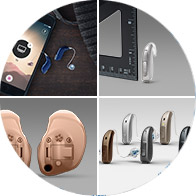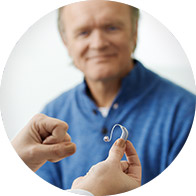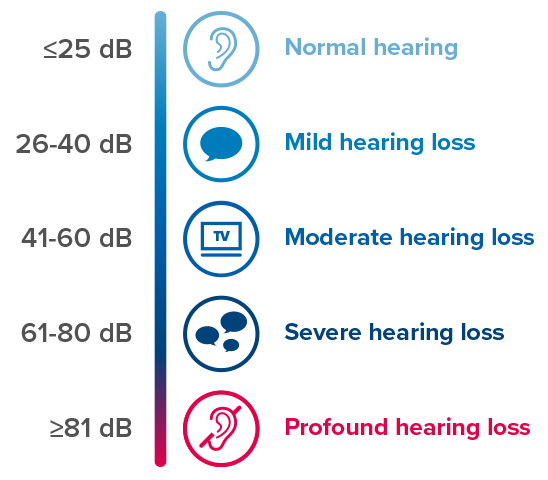Factor 4 - Hearing aid technology
As hearing aid technology advances, the sound experience become more natual and provides better clarity and reduces your listening effort.
Different levels of technology means you and your clinician can find an optimal option taking into account your lifestyle and budget.
Some feature options include:
360-degree sound experience:
Rather than directional microphones that assume you want to hear from just the front, a "360-degree sound" experience provides you balanced sound from all directions

Oticon BrainHearing™
This technology is based on the fact that we hear through our brains, and our ears are merely responsible for picking up the soundwaves. BrainHearing™ by Oticon supports the brain’s natural process of making sense of sound by allowing the brain to hear in the most natural way possible, thereby reducing fatigue. BrainHearing™ technology provides the following benefits: open access to all speakers, background noise reduction, speech clarity, sound localization for improving focus, and personalized programming settings.

Feedback reduction
Feedback (which is often experienced as a whistling sound) can occur when acoustic signals escape the ear canal and hit the microphone on the hearing aid, producing a whistling sound. However, feedback in modern hearing aids is much less common due to new technology supporting the prevention of the feedback sound.

Tinnitus support
Many of those with hearing loss also experience symptoms of tinnitus. Recent technology allows users to listen to relief sounds through their hearing aids which help to sooth and decrease the annoyance of tinnitus.
Oticon offers a specific program called Tinnitus SoundSupport™. You can also choose to simply stream your favorite sounds from your smartphone into your hearing aids as a way to relieve tinnitus symptoms.
Learn to get relief from tinnitus:
Tinnitus

Device connectivity
Another popular feature is connecting your hearing aids to mobile phones or tablets so that phone conversations, music, or video calls can be heard directly through the hearing aids. This allows you to experience clear, high quality sounds. It is also possible to connect your hearing aids to your television. You can then customize the volume of the program so that it can be as loud (or as quiet) as you want; meanwhile, your family members can enjoy the TV at their own volume of choice.

Rechargeable batteries
Some modern hearing aids can be powered by rechargeable batteries. 3 hours of charge will provide a full day of power (including the power needed for wireless connections and streaming).
Rechargeable batteries are economical in the long-term and typically only require replacement every 3-5 years.
Learn more about hearing aids with rechargeable batteries:
Rechargeable hearing aids















